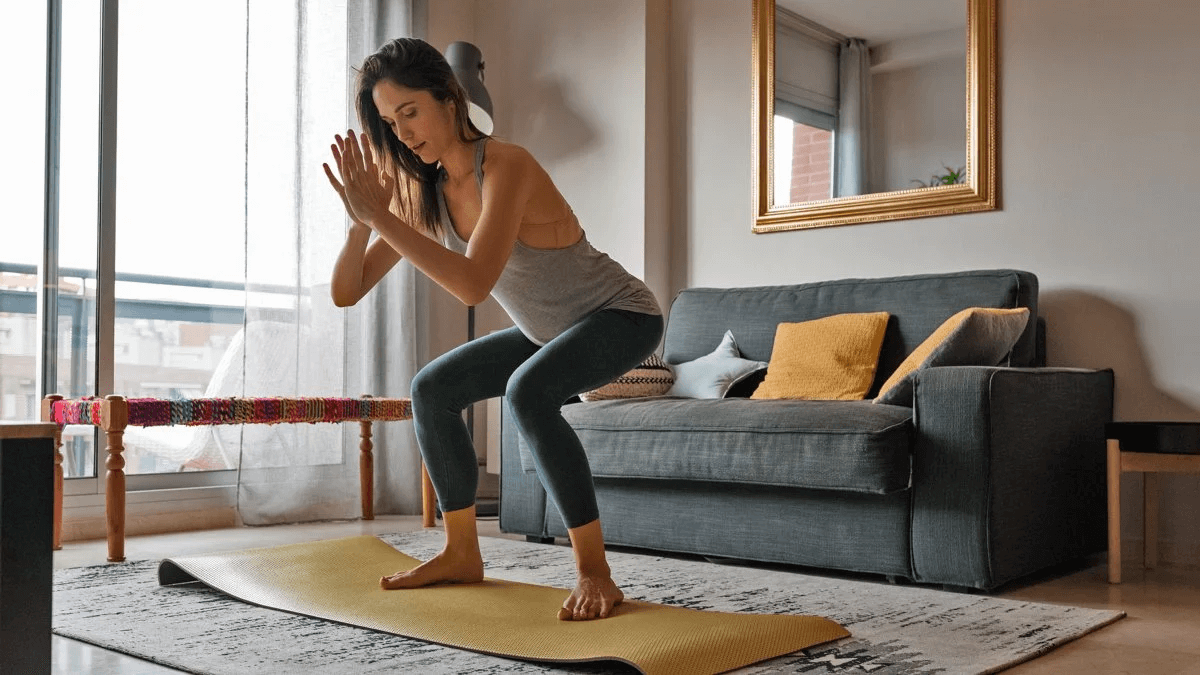6 Rules for Staying Active During a Pandemic

6 Rules for Staying Active During a Pandemic

Tricks to making your home workout as easy—and productive—as possible
mid so much uncertainty surrounding the COVID-19 pandemic, perhaps the most important thing you can do for your mental and physical health—outside of meticulously practicing social distancing, or, as I’ve come to call it, physical distancing—is to regularly move your body. Hundreds of scientific studies show that physical activity is associated with dramatic reductions in depression and anxiety. Other research shows that regular exercise boosts immunity, so long as you aren’t redlining yourself all the time.
State guidelines are limiting in-person gatherings, and all but seven states have issued some kind of stay-at-home order. Gyms, yoga studios, and spinning rooms across the country are closed. Same with state and regional parks. If you are going to exercise outdoors, you need to be in uncrowded spaces and maintain at least six feet between you and anyone else at all times—otherwise, as running writer and coach Mario Fraioli says, “You’re being selfish, dangerous, and part of the problem.”
It’s a conundrum. At a time when physical activity is more important than ever, it also seems to be harder than ever. But this is largely an illusion. It doesn’t take much to get a good workout in. Here are two I’ve suggested:
Some quick (25 minute) workout ideas:
20 push-ups
20 squats (with or without kettelbell)
1 to 2 get-up(s) on each side
15 squats
15 shoulder press (single arm, kettlebell)
15 swings (single arm, kettlebell)
10 push-ups
For both: 5 times through, rest 2 minutes between each.
There are a number of other workouts that you can do from home. But for lots of people, the struggle isn’t knowing what to do or lacking options, it’s actually doing it.
A key to exercising regularly is making it automatic, part of a well-worn routine. It’s not surprising, then, that exercise may feel especially challenging right now, given that so many of our routines have been thrown out of whack. Here are a few tricks to help you get back on track.
Schedule Times for Physical Activity;
What we schedule is what gets done. If you don’t block off time to exercise, it’s all too easy to keep putting it off. Soon enough your window of opportunity will have closed. Don’t just plan when you’re going to workout but also what you’ll do. The last thing you want is to have to think about your workout or make it up as you go. Getting started is hard enough. The less friction and energy you need to expend, the better. Do everything you can to make your job as simple as possible: show up, and execute. For example, you could plan out your week in advance. Know what days and times you’ll work out and what your routine will be on each of those days.
Be Prepared for Resistance—and Push Through It
Getting started is never easy, especially now. There’s a strong temptation to keep browsing the internet, turn on the television, or do whatever else is more appealing than moving your body. This is especially true since you’re literally in the comfort of your own home. Just get started. It’s as simple and as hard as that. Remember that mood follows action: you don’t need to feel good to get going, you need to get going and then you’ll feel good.
Create Physical Boundaries
Research shows that your surroundings have an enormous impact on your behavior; you come to associate certain physical spaces with specific mindsets and actions. If you have an actual home gym, great! But most people—myself included—do not. My makeshift gym also serves as my home office, library, and guest room. It consists of three kettlebells and two resistance bands stored under a piano. Yet it’s still helpful to have a few physical cues that signal you are converting your space for a workout. Try taking your laptop out of the room, opening a window to let air in, shutting a door that you otherwise keep open, or rearranging furniture.
Eliminate Distractions
Your digital devices are always distracting. They’re even more so in the midst of a pandemic, where the news is updating by the minute. Turn your computer off. (Don’t just let the screen saver come on, as it’s way too easy to log back in. Actually turn it off.) If you’re using your phone for music or as a timer, keep it on airplane mode. Otherwise, put it in another room.
Keep It Social
If you’re accustomed to working out in a group, stick with it virtually. I’ve used the video-calling apps FaceTime and Zoom for group workouts. Is it as good as being there in person? Of course not. But it’s a lot better than training alone.
Lower Your Expectations
Happiness is a function of expectations minus reality. During this pandemic many people are caring for kids full-time, working in a new way (if at all), and bottled up indoors with all kinds of emotions. This is not the time to aim for personal records in your training. Set goals that are achievable. Shift the focus from exercising for peak performance to exercising for general health and well-being. There’s no need to overcomplicate an already complicated situation. Right now, peak performance is general health and well-being.